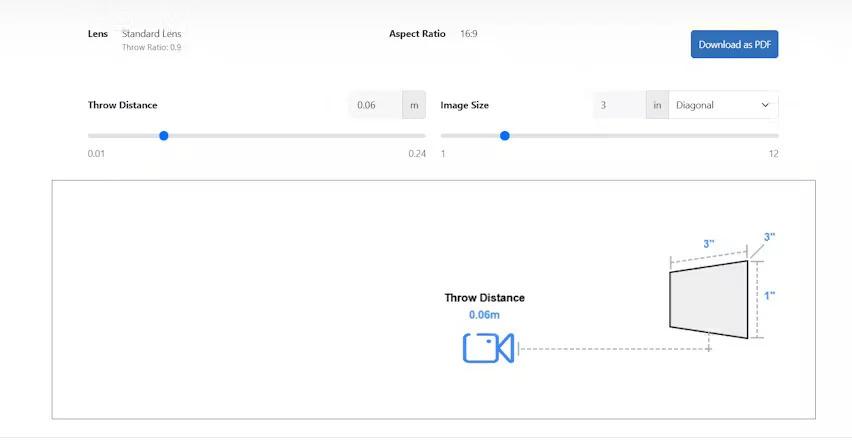Can Projectors Run Non-Stop Like LED Walls

Projectors and LED walls are two of the most popular display technologies in professional AV setups. Both are widely used in corporate environments, entertainment venues, control rooms, and retail spaces. However, when it comes to continuous operation, questions often arise about the ability of projectors to run non stop like LED walls. In comparing Video Wall vs Projector, understanding operational limits, maintenance requirements, and performance longevity is essential for making informed decisions.
Introduction to Continuous Display Requirements
Certain environments require displays to operate around the clock. Control rooms, public information displays, transportation hubs, and retail signage often demand continuous operation to deliver critical content without interruption. While LED walls are designed for 24/7 performance, projectors are typically engineered for limited operating hours. This raises the question: can projectors realistically run non stop like LED walls?
Projectors function by projecting light from a lamp or solid state source onto a screen, while LED walls are composed of self emitting panels that generate light directly. This fundamental difference affects their suitability for continuous use.
Operational Limitations of Projectors
Projectors, especially lamp based models, face several challenges in continuous operation:
-
Lamp Lifespan: Traditional lamps typically last between 2,000 to 5,000 hours. Running a projector continuously would exhaust the lamp rapidly, leading to frequent replacements and increased maintenance.
-
Heat Generation: Projectors produce significant heat during operation. Continuous use can cause overheating, reduce lamp life, and impact internal components unless advanced cooling systems are used.
-
Image Dimming: Over time, lamp output may decrease, causing dimmer images and reduced contrast, which affects visibility and viewer experience.
-
Maintenance Requirements: Projectors require periodic cleaning, lamp replacement, and calibration. Running non stop amplifies the frequency of these maintenance tasks, resulting in operational interruptions.
Even high brightness or commercial grade projectors are limited in how long they can operate continuously without risk of performance degradation or component failure.
Advantages of LED Walls for Non Stop Use
LED walls are inherently designed for continuous operation and outperform projectors in 24/7 environments:
-
Long Lifespan: LED panels can last 50,000 to 100,000 hours, making them ideal for environments where displays must remain on around the clock.
-
Self Emitting Technology: Each pixel produces its own light, eliminating reliance on lamps that burn out. This ensures consistent brightness and color over extended periods.
-
Modular Design: Individual panels can be replaced without shutting down the entire display, providing high reliability and minimal downtime.
-
Lower Heat Output: LED walls generate less heat than high brightness projectors and include integrated cooling systems to maintain performance during continuous operation.
-
Low Maintenance: LED walls require minimal maintenance compared to projectors, reducing operational disruptions and cost.
These attributes make LED walls the preferred choice for professional applications requiring uninterrupted operation, from control rooms to airport signage and retail displays.
Comparing Video Wall vs Projector for Continuous Use
When evaluating Video Wall vs Projector for non stop operation, several factors highlight why LED walls are more suitable:
-
Durability: LED walls are built for long term, continuous use, whereas projectors are designed for intermittent operation.
-
Maintenance Needs: Projectors require frequent lamp replacements and filter cleaning, which interrupts continuous operation. LED walls are largely maintenance free.
-
Brightness Consistency: Projectors can lose brightness over time with extended use. LED walls maintain consistent light output for tens of thousands of hours.
-
Redundancy: Modular LED walls allow individual panels to be swapped without taking the full display offline, a level of redundancy projectors cannot provide.
When Projectors Can Operate Longer
Certain projector models, such as laser projectors or high end commercial units, can support extended hours of operation better than traditional lamp based projectors:
-
Laser Projectors: Provide longer lifespan light sources of 20,000 to 30,000 hours, less heat generation, and more consistent brightness.
-
Commercial Installation Projectors: Designed for heavier duty operation with enhanced cooling, dust protection, and optimized maintenance schedules.
-
Scheduled Operation: Some organizations use multiple projectors in rotation to extend operational life and reduce downtime.
Despite these improvements, even advanced projectors are not ideal for true 24/7 operation compared to LED walls. They may still require monitoring and periodic maintenance to prevent failure.
Use Case Recommendations
-
Control Rooms and Monitoring Centers: LED walls are preferred for continuous monitoring and mission critical operations. Projectors can be used as backup or secondary displays.
-
Retail Digital Signage: LED walls offer uninterrupted content delivery throughout the day and night, while projectors are better suited for temporary or indoor controlled environments.
-
Corporate Presentations and Events: Projectors excel in temporary setups and intermittent use, but not for permanent continuous operation.
Optimizing Projector Longevity
If projectors are required to operate for extended hours, several strategies can help:
-
Use Laser or Solid State Light Sources: These provide longer lifespans and more consistent brightness.
-
Enhance Cooling: Ensure projectors have sufficient airflow and cooling mechanisms to prevent overheating.
-
Implement Rotational Use: Rotate multiple projectors to distribute operating hours evenly.
-
Schedule Maintenance: Monitor lamp hours and perform preventive maintenance to avoid unexpected downtime.
Conclusion
While some advanced projectors can operate for extended periods, they are not designed to run non stop like LED walls. The Video Wall vs Projector comparison clearly favors LED walls for environments requiring continuous operation. LED walls offer long lifespan, consistent brightness, low maintenance, and modular redundancy, making them the optimal choice for 24/7 professional AV applications.
XTEN-AV provides tools to simulate operational performance, compare projector and LED wall setups, and plan for reliability in continuous operation environments. By leveraging these tools, AV professionals can design systems that deliver uninterrupted, high quality visuals while minimizing maintenance and operational risk.
Read more: https://eurls.live/articles/which-is-more-reliable-for-24-7-use
- Art
- Causes
- Best Offers
- Crafts
- Dance
- Drinks
- Film
- Fitness
- Food
- Oyunlar
- Festival
- Gardening
- Health
- Home
- Literature
- Music
- Networking
- Other
- Party
- Religion
- Shopping
- Sports
- Theater
- Wellness



